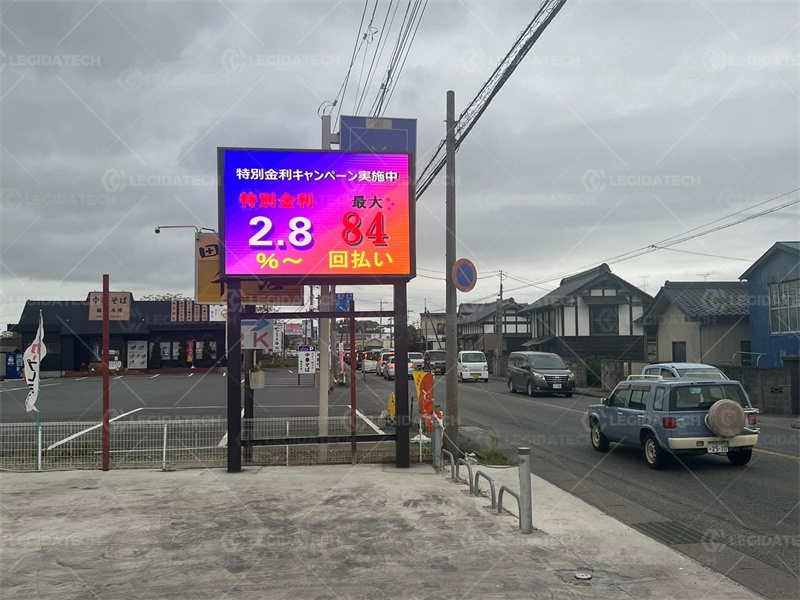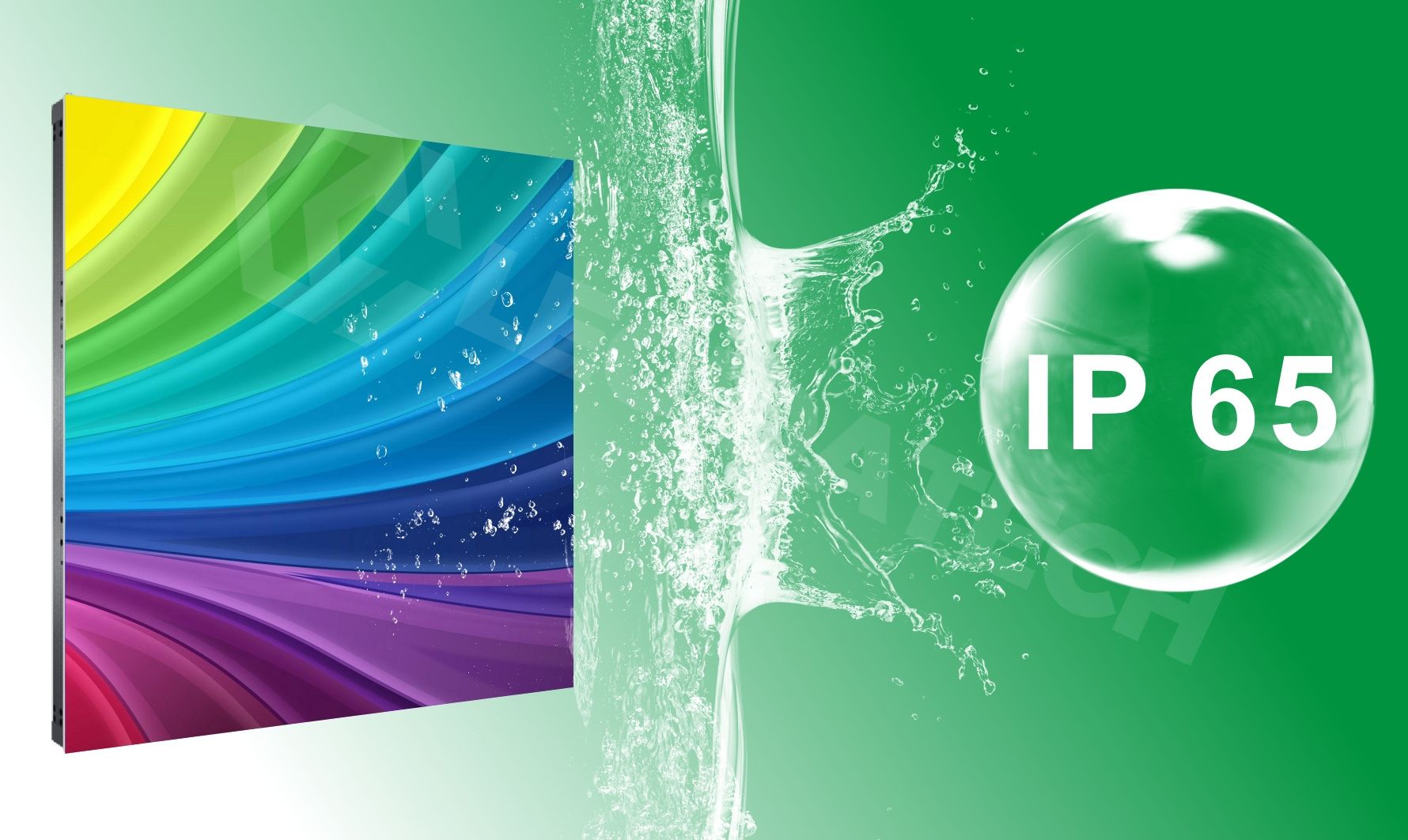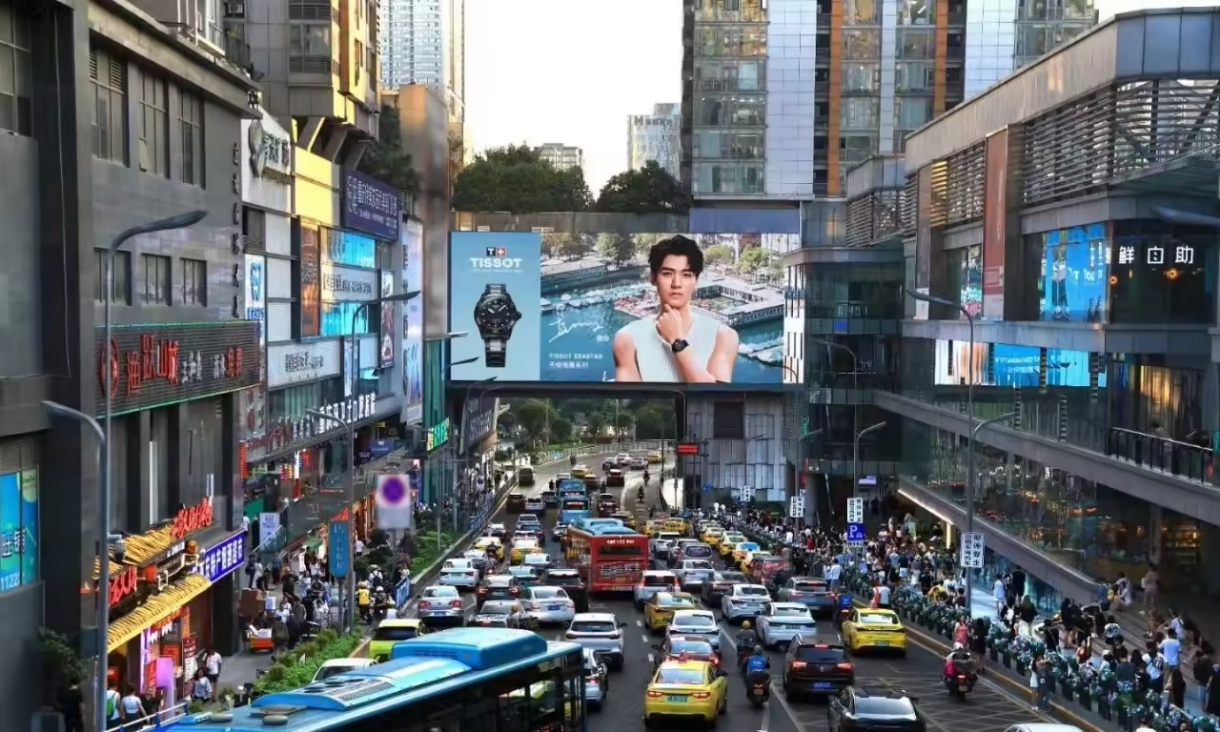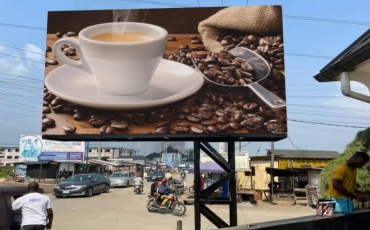With the arrival of winter, extreme low temperature weather has become more and more frequent. Nowadays, LED large screens are widely used in various outdoor scenes, and can be said to be spread all over the streets and alleys of the city.
Under low temperature conditions, how to maintain the normal operation of outdoor large screens has become a great challenge.
So, in severe cold weather, how can LED display screens cope with the test of low temperature, and what measures should be taken to ensure its normal operation?
1. Hazards caused by low temperature
According to professional data, in extremely low temperature environments, the mask plate, PCB, module kit, box frame and other materials of LED display screens will have various problems due to thermal expansion and contraction coefficients and physical size changes.
For example, gaps are generated between modules and boxes, and the shrinkage of module kits and box frames will cause the shrinkage and breakage of kits.
The shrinkage of lamp beads attached to PCB and mask will cause the lamp beads to loosen and display failure.
Low temperature shrinkage of waterproof rubber rings of the box body leads to hidden dangers of water ingress, etc.

In severe cases, the startup of the LED screen cannot be carried out.
In addition, in low temperature environments, the protective layer attached to the surface of the wires is easily damaged, which will cause serious consequences such as short circuits and fires.
Around the world, the LED display screens used in countries with extremely low temperature environments have special requirements for materials.
For example, in Russia and Canada, the local temperature can drop below -30 degrees in winter, and the temperature in the coldest area of Siberia can reach -73℃.
The lowest temperature record in Mohe City, Heilongjiang Province, my country has reached -53℃.
Low temperature environment will greatly affect the operation of LED display screens.
Under normal power supply, the screen will not start when it is below -20℃.
Therefore, specific equipment such as air conditioning or heating equipment is required to raise the local temperature, and the power supply capacitor can be thawed before it can start normally.
In most areas, low temperature may cause the LED display screen to have a startup delay, and it will take a long time to display normally.
This is because the response speed of the LED chip slows down in low temperature environment.
At the same time, the energy consumption of the LED display screen will also increase, resulting in unnecessary energy waste.
In addition to low temperature, we must also guard against the harm caused by condensation in winter.
Condensation is a small droplet formed by condensation of water vapor in the air, which will adhere to the PCB board and module surface of the display screen.
If the waterproof treatment is not done well, the PCB board and the module will be corroded, which can easily reduce the life of the LED screen or even completely damage it.

Therefore, a display screen with a coated waterproof coating should be selected in the early stage to prevent malfunctions due to condensation after installation and use.
2. Prevent low temperature hazards
To better prevent low temperature hazards, we must start from the source.
This source is to consider the various preparations required for stable operation in the later stage when selecting LED materials and performance.
We should give priority to products with good performance such as cold resistance, waterproofness, and dustproofness.
In addition, it is necessary to ensure that the power supply, control card and other accessories of the display screen also have corresponding cold resistance to ensure normal operation in extremely cold weather.
In terms of the installation location, full estimation and consideration should also be made
In areas prone to extremely cold weather, the display screen should be installed in a sunny and windproof place as much as possible to reduce the impact of climate on the display screen.
At the same time, it is necessary to ensure that the installation is firm to prevent damage to the screen body due to factors such as wind.
In extremely cold weather, ice, snow and dust are easy to adhere to the surface of the display screen, which can easily cause physical damage to the display screen.
Therefore, cleaning work should be done well to keep the surface of the large screen clean.
When cleaning, be careful to use a soft cloth to wipe and avoid excessive scratching to avoid damaging the surface of the screen.
If conditions permit, rain covers, dust covers and other equipment can be installed to protect the display screen from the influence of bad weather.
The heat dissipation design of the display screen is particularly important.
The heat dissipation factor is crucial for the normal operation of the LED display screen. The heat dissipation design of the display screen should be reasonable.
Avoid damage to the screen body due to heat accumulation, and the working status of the heat dissipation equipment should be checked regularly.

If abnormalities are found, they should be repaired or replaced in time.
In normal times, the performance indicators of the display screen should be checked and monitored to be prepared.
The brightness, color difference and other indicators of the display screen should be checked regularly to ensure normal display effects.
In addition, the power management of the display screen should be paid special attention, because the power supply equipment is more easily affected in extremely cold weather.
The working status of equipment such as power lines and power adapters should be checked regularly to ensure stable and reliable power supply.
3. Protective measures
In winter, if it snows, outdoor LEDs should take necessary protective measures to ensure the normal operation of the large screen.
Add heating devices
In order to ensure that the display screen works normally at low temperatures, it is a common method to install a heating device inside it.
The heating device can be in various forms, such as electric heating wires, heating films, etc.
In order to ensure that the heating device can evenly heat the display screen, they should be evenly arranged inside the display screen.
Configure snow removal function
When necessary, the display screen can be equipped with snow removal equipment, such as installing sprinkler systems and snow scrapers, so as to remove snow in time when snowfall.
In the early installation design of large screens, a certain tilt angle can be made, so that the snow can slide off automatically.
Cold protection treatment
When necessary, the display screen should be treated with cold protection in time.
For example, use insulation materials and cold-proof cloth to cover the surface of the display screen to reduce the impact of cold air on the display screen.
This can keep the display screen in a suitable temperature state. In addition, guardrails and cold-proof facilities can be added around the display screen to avoid collision and damage to a certain extent.
Enhance the adaptability of the power supply
In winter, due to the low temperature, the power supply may be affected. In order to ensure the normal operation of the LED display screen, the adaptability of the power supply can be enhanced.
For example, measures such as constant current source power supply and adding power filter can be taken to ensure the stability and reliability of the power supply.
Add a backup system
In order to prevent the LED display screen from failing due to low temperature or other reasons, a backup system can be added.
The backup system includes backup power supply, backup controller and other equipment, which can be switched to the backup system in time when the main system fails.
This can reduce downtime due to failures to maintain the normal operation of the display screen in extreme climates
In winter, in addition to adverse factors such as extreme low temperature, static electricity is also an aspect that needs special precautions.
It can be said that it is a major killer of LED display screens.
After static electricity is generated, it will not only shorten the life of the display screen, but also cause the electronic components of the screen to be punctured, causing irreversible physical damage.
In order to prevent static electricity and protect the safety of the display screen, a grounding wire should be added to the display screen.
When operating, the operator must wear an anti-static wristband to prevent static electricity from damaging the screen.
In short
in the cold winter, we should raise awareness of prevention and have sufficient effective methods and measures.
Avoid various faults caused by low temperature to the LED display screen, so as to maintain its normal operation.



